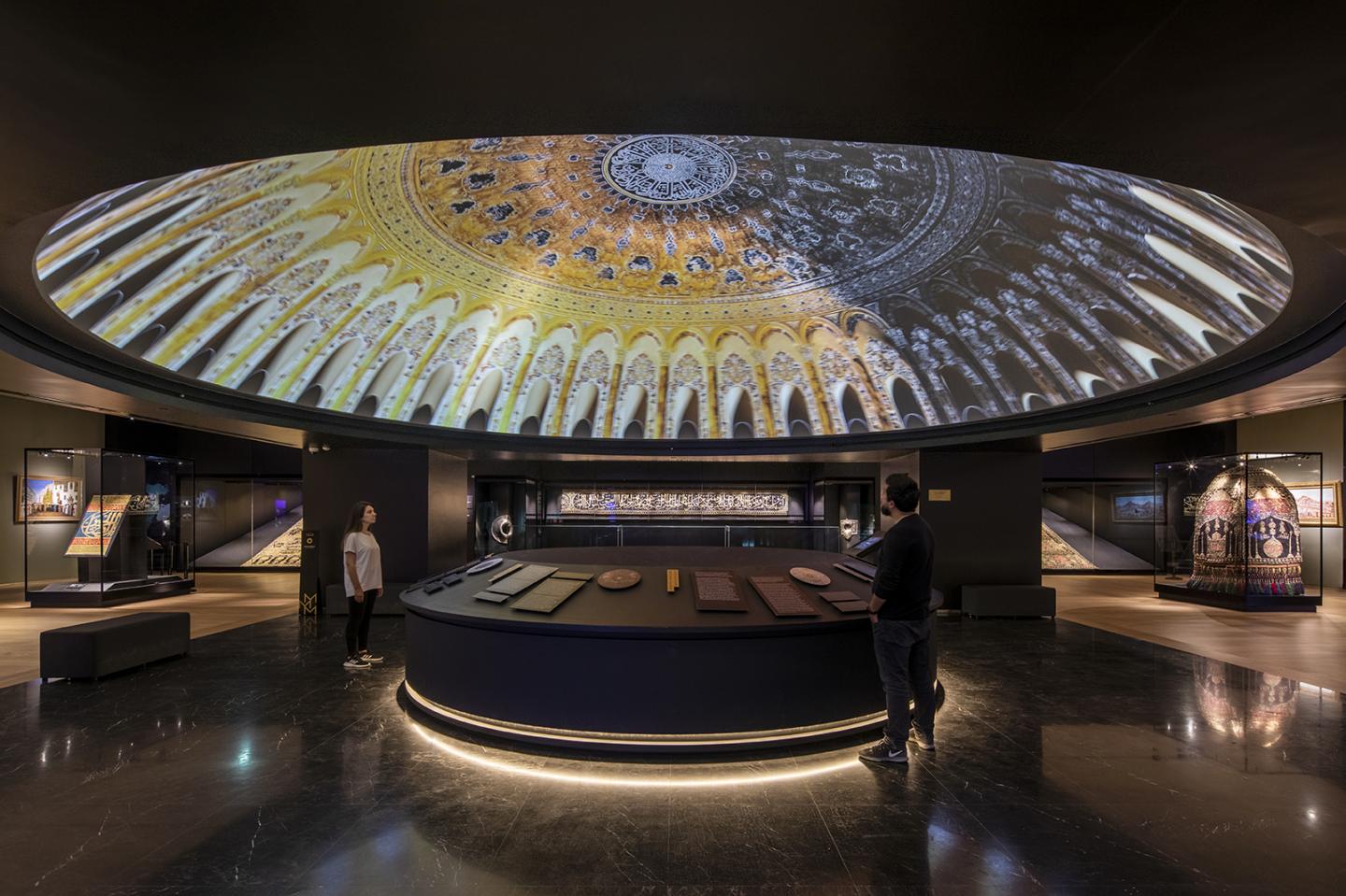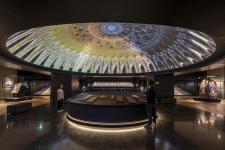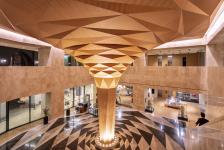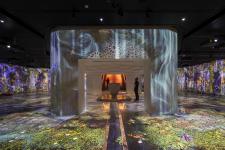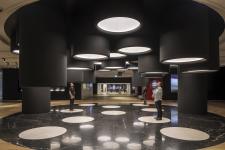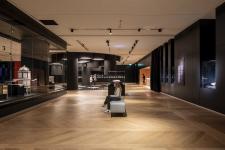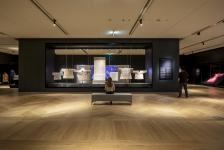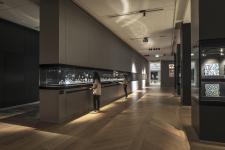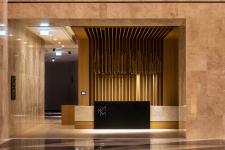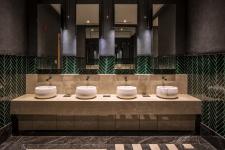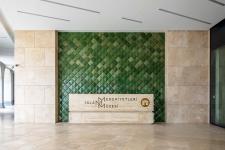The Museum of Islamic Civilizations (MIC), which was created to exhibit the artefacts brought together in the context of Islamic Civilizations, was opened to visitors on April 8th 2022 in Çamlıca, Istanbul, Turkey. The Museum of Islamic Civilizations is part of the complex of Great Çamlıca Mosque. The project comprises the interior design of the museum and exhibition design, the scenography and designing ancillary spaces of the museum, such as cafe, museum shop, wc etc. Designed in two stages, the first stage of the project included the creation of an exhibition scenario by determining the titles and sections of the exhibition, and the latter consisted of the implementation of this scenario by forming the museum's scheme. Afterward the interior and other spaces of the museum and exhibition were designed. At this stage, together with the interior design of the museum, the layouts of the museum showcases, the content and layout of the graphic narratives throughout the entire exhibition space, and the contents and places of the interactive and digital storytelling in the space were determined. In the second stage, in line with the finalized inventory work, the positions and placements of all the artefacts in the showcase were defined, with the design of their pedestals and exhibition apparatus. In addition, the color and material selections of the area where they would be exhibited were decided for each artefact.
This project includes the placement of more than 400 artefacts dating from the 7th to the 19th centuries, describing the artistic and historical development of Islamic Civilization throughout 14 sections. The inventory, which was created under the execution of experts within the Directorate of National Palaces, was created by selecting from the previously unexhibited artefacts of 6 museums: Topkapi Palace, Museum of Palace Collections, Istanbul Archaeological Museums, Istanbul Tombs Museum, Museum of Waqfs and the Museum of Turkish and Islamic Arts. The classification of the artefacts and the creation of the exhibition scenario and their placement in the space within a spatial narrative were realized by working consultants within the scope of the project. The museum, which consists of artefacts brought together on representation, places of worship, the spread of Islam, scientific developments, architectural and decorative elements, manuscripts, textile works, woven textiles and numismatics, aims to present a comprehensive field of storytelling and experience in the context of the culture and architecture of the Islamic Civilization. The narrative of the exhibition of these valuable artefacts, meeting the visitors for the first time, is supported by audio/visual installations integrated with the architecture and wide graphic expressions with illustrations. There are interactive experience areas for the visitors in multiple sections of the museum. In the two sections, The Dome and Water of Life that present the areas of Immersive Experience, while in the three sections; The Conquest in Islam, Spread of Islam and Calligraphy; interactive narratives take place. In all sections, there are kiosks, screens and tablets where the visitors can access detailed information about the artefacts. In addition to the exhibition area, the museum includes an information/ticket area, cafe/restaurant, museum shop, temporary exhibition, workshops, museum storage, administrative offices, conservation/preservation and restoration laboratories.
The museum encompasses a total of 8.000 m2 exhibition area and has 2 floors. In the exhibition areas, the middle areas, which have wide openings, are planned, while ancillary spaces of the museum are placed on the peripheries, aiming to create the uninterrupted circulation of the visitor in the exhibition section and provide the perception of a holistic space. While The Dome and Water of Life sections, which are Islamic architectural interpretations and the areas of Immersive Experience, are located in the middle areas, showcases are placed on the peripheries and sized according to the needs of the artefacts and the dimensions of the exhibition space.
In the design of the exhibition, it was aimed to bring together artefacts from different periods in the context of a scenario and to create a spatial design. Each museum showcase was sized according to the requirements of the exhibited artefacts and the spatial narrative in the exhibition section. The exhibition of each work referring to its own context, the design and placement of the exhibition pedestals in a way to bring artefacts to the forefront, and the harmony with the colors of the artefacts in the color selections were taken into consideration. Inside, display cases that have special air conditioning systems, lighting and security technologies were used for the preservation and display of the artefacts.
2019
2022
Construction Area: 11000 m2
Client: Çamlıca Eğitim ve Kültür Vakfı & Gürsoy Grup Restoration
Contractor: Gürsoy Grup Restoration
Design Team: Kadir Uyanık, Maksat Recepbayew, Dicle B. Özdemir
Project Team: Gizem Arslaner, Anıl Ahmet Asal, Tuncay Güner, Damla Çolakoğlu
Intern Architects: Nihan Ece Çelik, Bilge Akbulut
Museum Identity Design: Bülent Erkmen Design
Exhibition Graphics ve Signage Design: Pompaa İstanbul
Audio-Visual Project: Decol Media Studio & Nohlab
Lighting Design: Aydınlatma Merkezi
Content Advisor: Prof. Dr. Mustafa Küçükaşçı
Sound and Acoustic Consultant: Süden Pamir
Technology Consultant: Oben Fıstıkoğlu
Lighting Consultant: Utku Başkır
Construction Project Consultant: Zeynep Yapar Ergün
Museum Showcase: Fibula
Audio GuideTonwelt
Structural Engineering: Akca İnşaat
Mechanical Engineering: Tanrıöver Engineering
Electrical Engineering: Fdc Engineering
Weak – High Current Project: Bes Technology
Audio – Visual Project Implement: Atempo
